Hey guys! As you may already know, in the past we had our weekly episodes of A Day in the Life where we showed you a bit of what’s it’s like to be an ESL teacher in Korea. Recently, however, our school has been undergoing some major changes and has been bought out by their corporate headquarters to become a branch. It has been really hectic ever since trying to get everything prepped for this new buyout, and so we have decided to take a hiatus from this segment while things settle down a bit more. Instead we thought we’d like to try a new chapter, called Let’s Go To… where we explore Korea and show you our days off from teaching ESL. Hope you all enjoy our first installment!
It has been the hottest summer recorded in Korea and so we haven’t really wanted to get out and go hiking very much recently. It’s not just the heat, Korea has some pretty awful humidity. We tried to hike Surisan a few weeks ago and ended up stopping halfway up because we were getting sick from the heat. When the humidity is that bad, it feels like you are in the middle of a rain forest. This week however, the heat finally let up a bit and we headed southeast of Seoul for Namhansanseong.
- These stone pillars were all throughout the park.
- Getting some video footage!
- Typical Korean hiking style: stairs all the way up!
The name literally translates into south (nam) Han (river in Seoul) mountain (san) fortress (seong). Most of the fortress today dates back to the Joseon period in the 17th century. The sixteenth king of the Joseon Dynasty, King Injo, fled to the fortress with his entire court and over 13,000 soldiers during the second invasion of the Manchu (the largest branch of the Tungusic peoples chiefly distributed throughout China). 3,000 monks also helped to defend the king, however the Manchus were able to wait until the food supply ran out and the king was forced to surrender giving his sons as hostages.
- The south gate of the fortress.
- At the top!
- Gorgeous views everywhere you look!
In 1954, after years of neglect, the site was made into a national park after many renovations and repairs. The area once had nine temples along with many command posts, but today a single command post, Seojangdae, stands as well as a temple, Changgyeongsa. Seojangdae is where Injo stayed during the Manchu siege. A second story was added to this building in 1751 and was named Mumangnu meaning the “Unforgotten Tower.” This refers to the unforgettable shame of the king’s surrender to the Manchus. There are other more recent temples on the path up to the south gate and fortress walls and the north, south, and east gates have all been restored.
- Along the fortress wall by the south gate.
- It is really green on the mountain in the summer.
- This photo is level and all the trees are growing a bit crooked.
It took us about an hour and a half to get to the park from Anyang. We finally got there around 2:30. We got off the bus at the very bottom of the park entrance, and hiked for quiet some time before stumbling across a road. There we realized that, if we had stayed on the bus a little bit longer, it would have kept going and dropped us off halfway up the mountain!
- By the south gate again.
- We hiked until sunset.
- Views of Seoul!
It was about an hour and a half hike from the bottom to the south gate, but we were also stopping often to take pictures and video. We then hiked along the ridge of the mountain towards Seojangdae, but got a little lost on one of the trails we ventured down. There are so many hiking trails all over the mountain to explore and unfortunately it got too dark to keep going. Needless to say, this park is huge and was way too big for us to see in just one day, so we will definitely be going back again! We hear that it is especially beautiful in the fall when the tress are changing red and yellow.
- This dog found us while hiking and stayed with us for a good 30 minutes. The sunset is really beautiful, here they call it “Golden Hour.”
- One last picture together before the light was gone!
At the bottom we have included a map (in English!) of the area as well as some directions to get there from Seoul. Be sure to check out our video of our hike through the park, too!



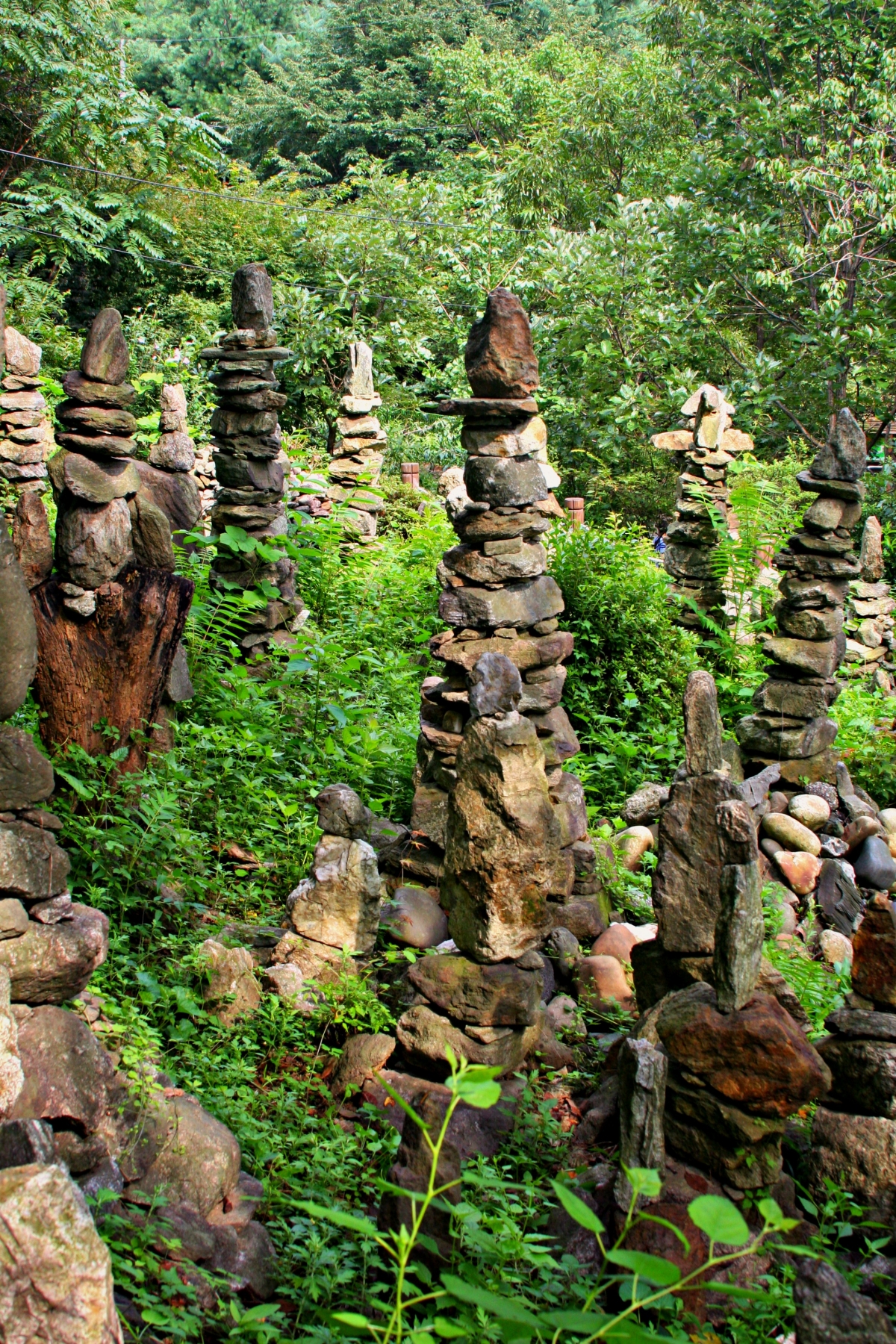

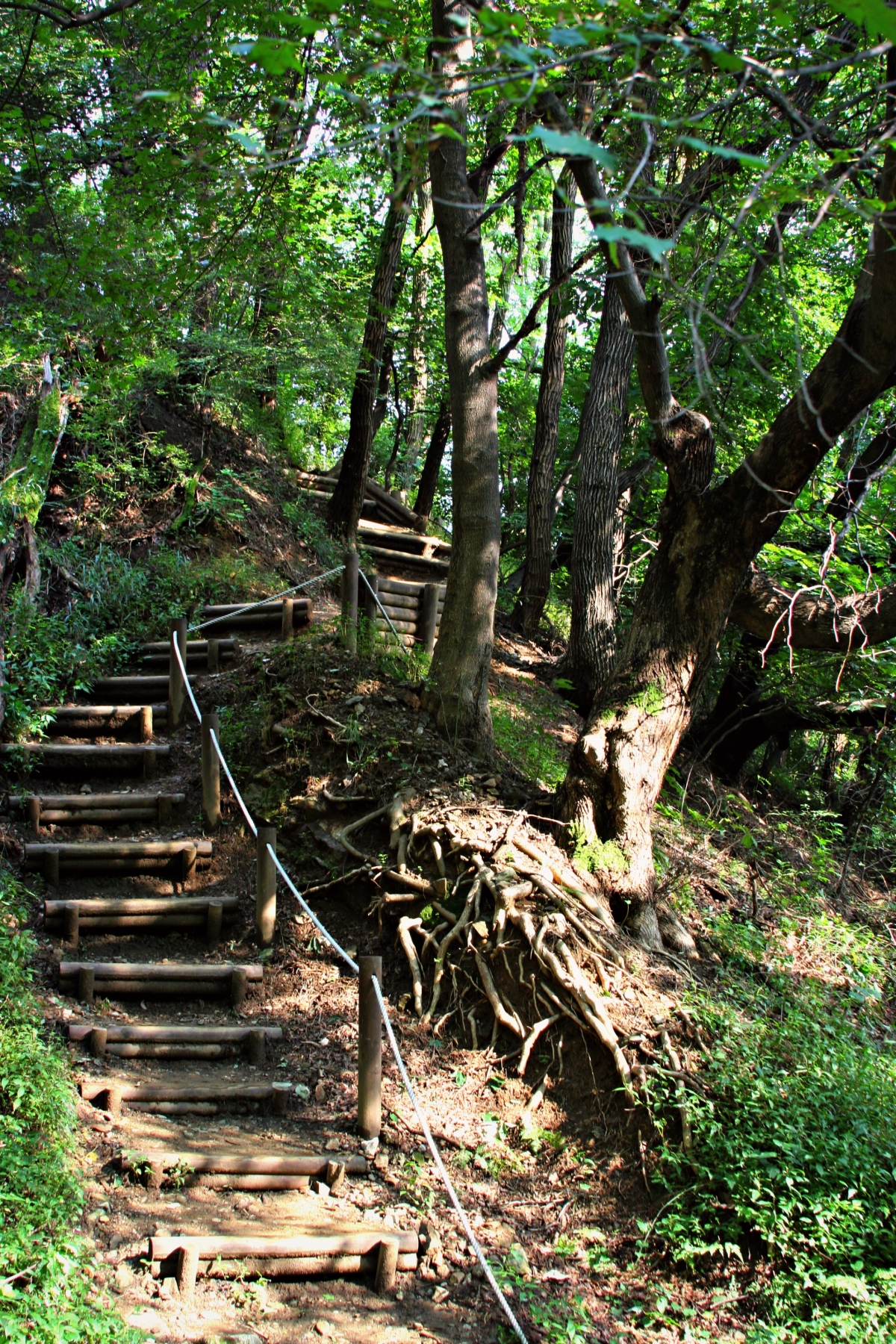
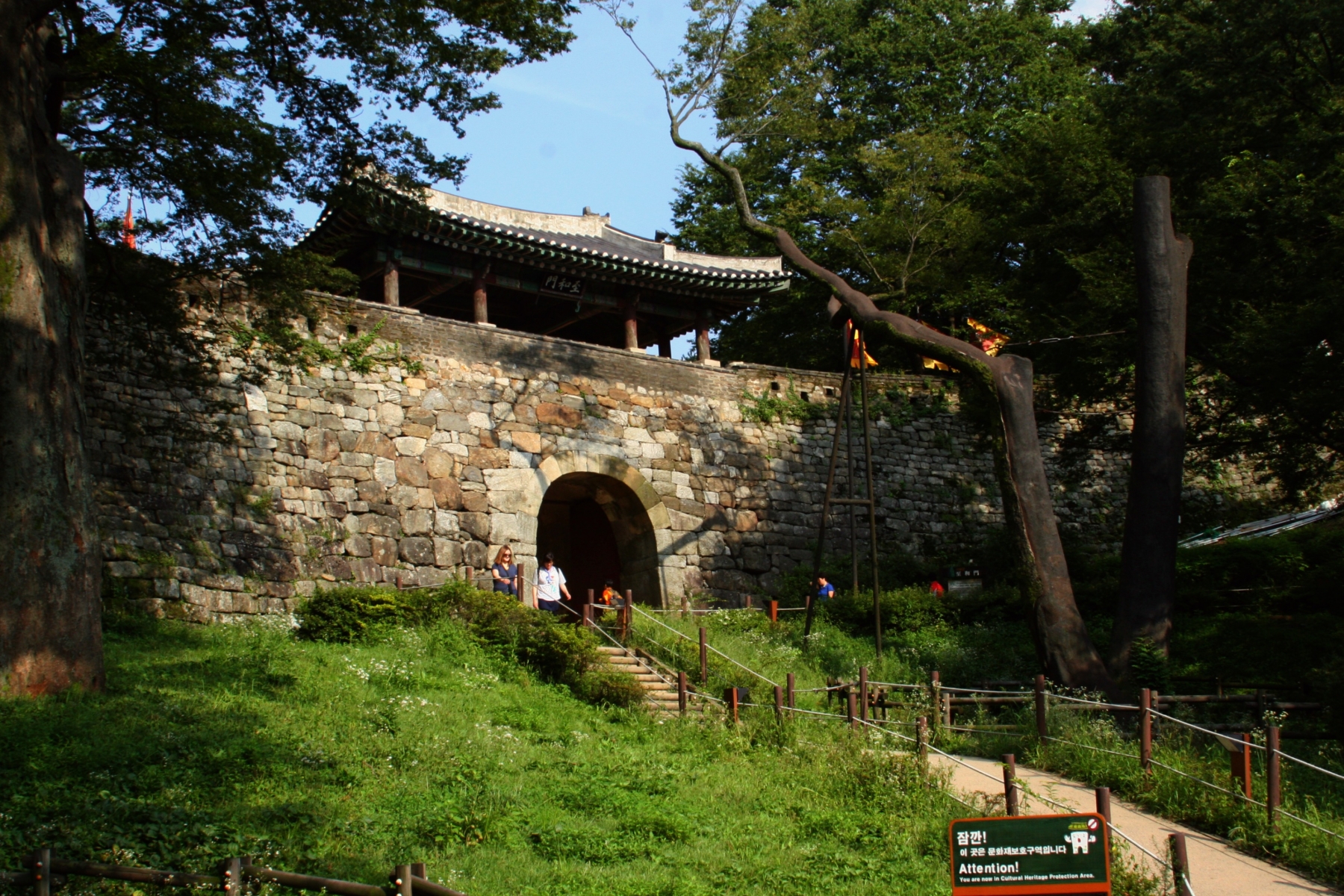
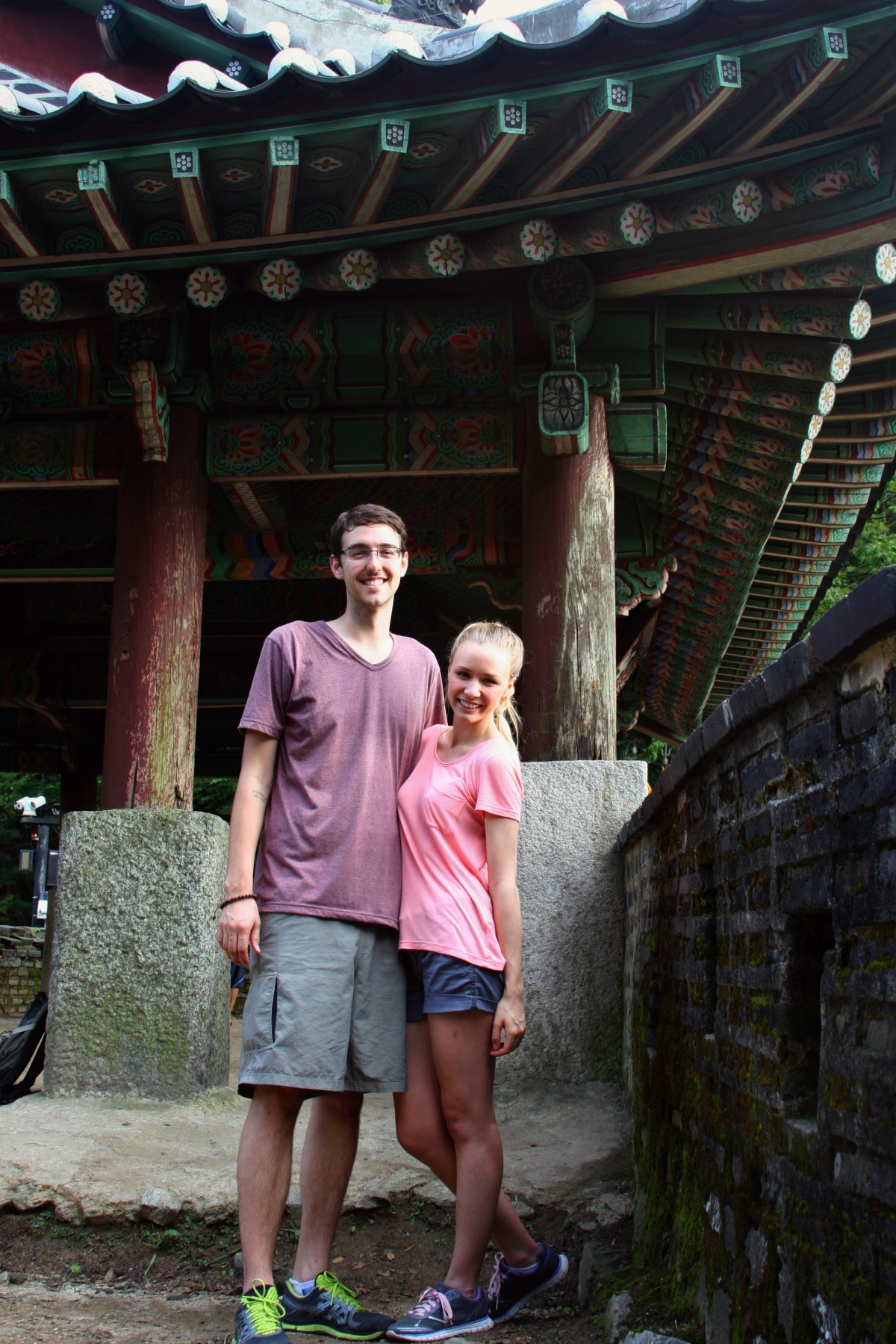
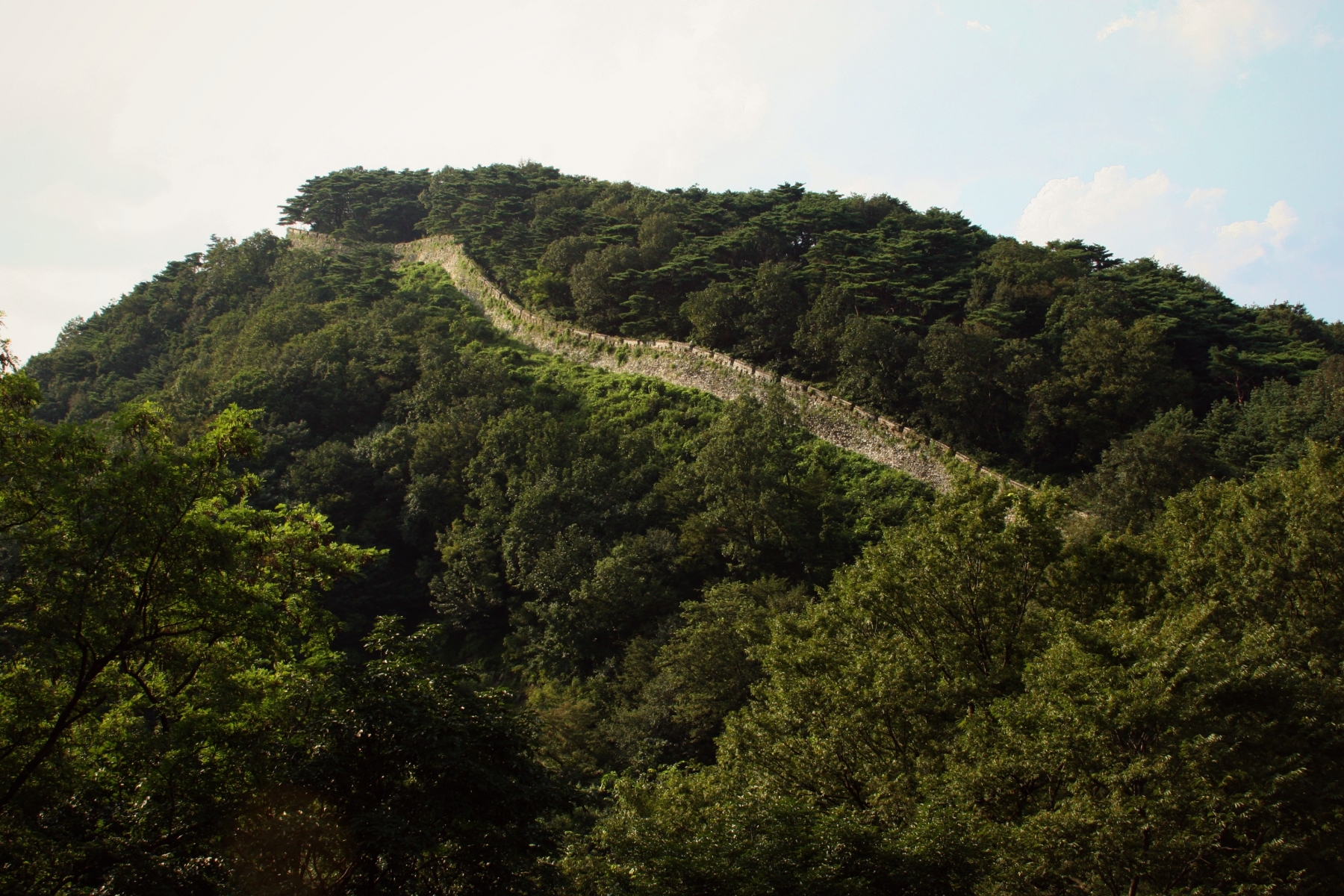
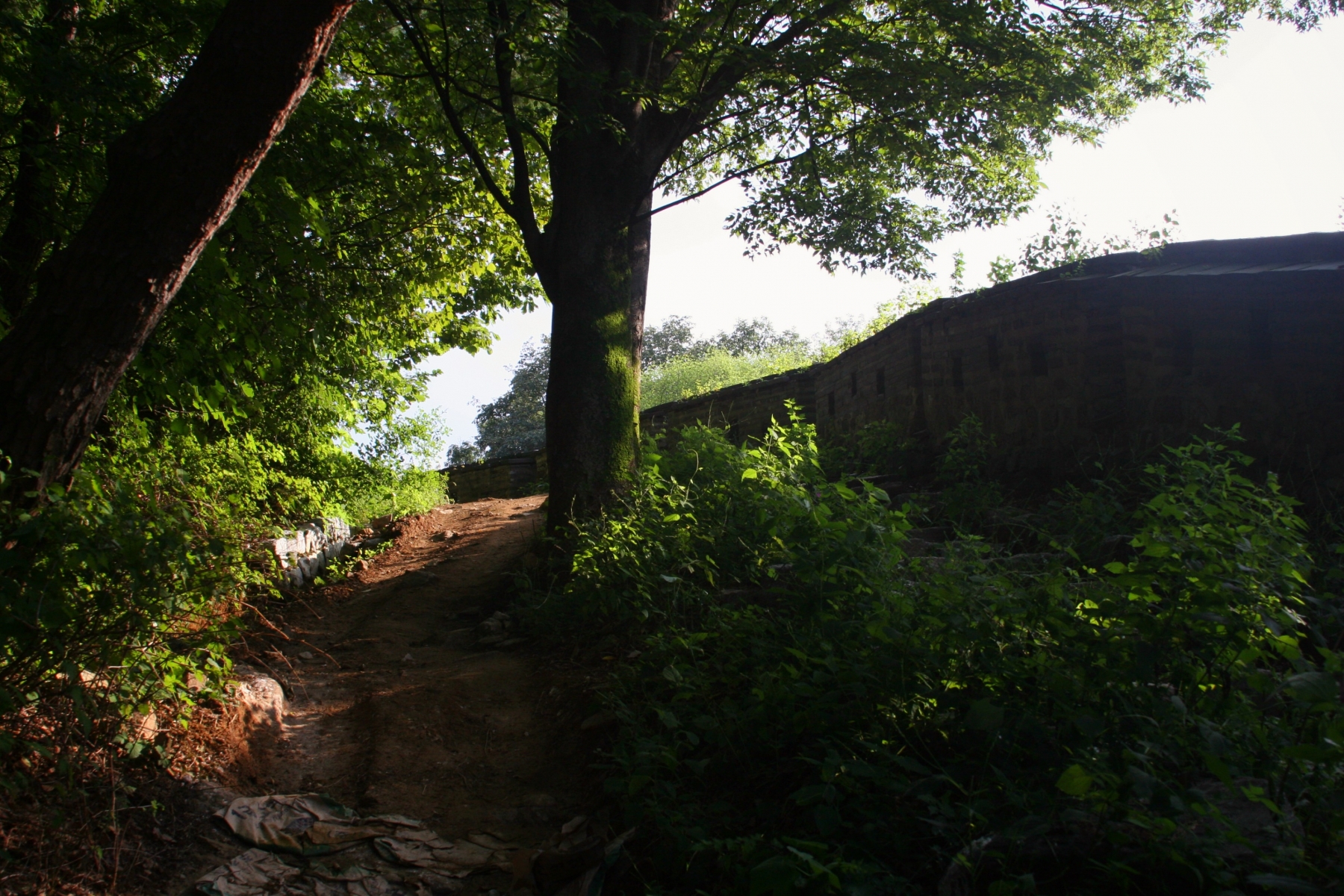

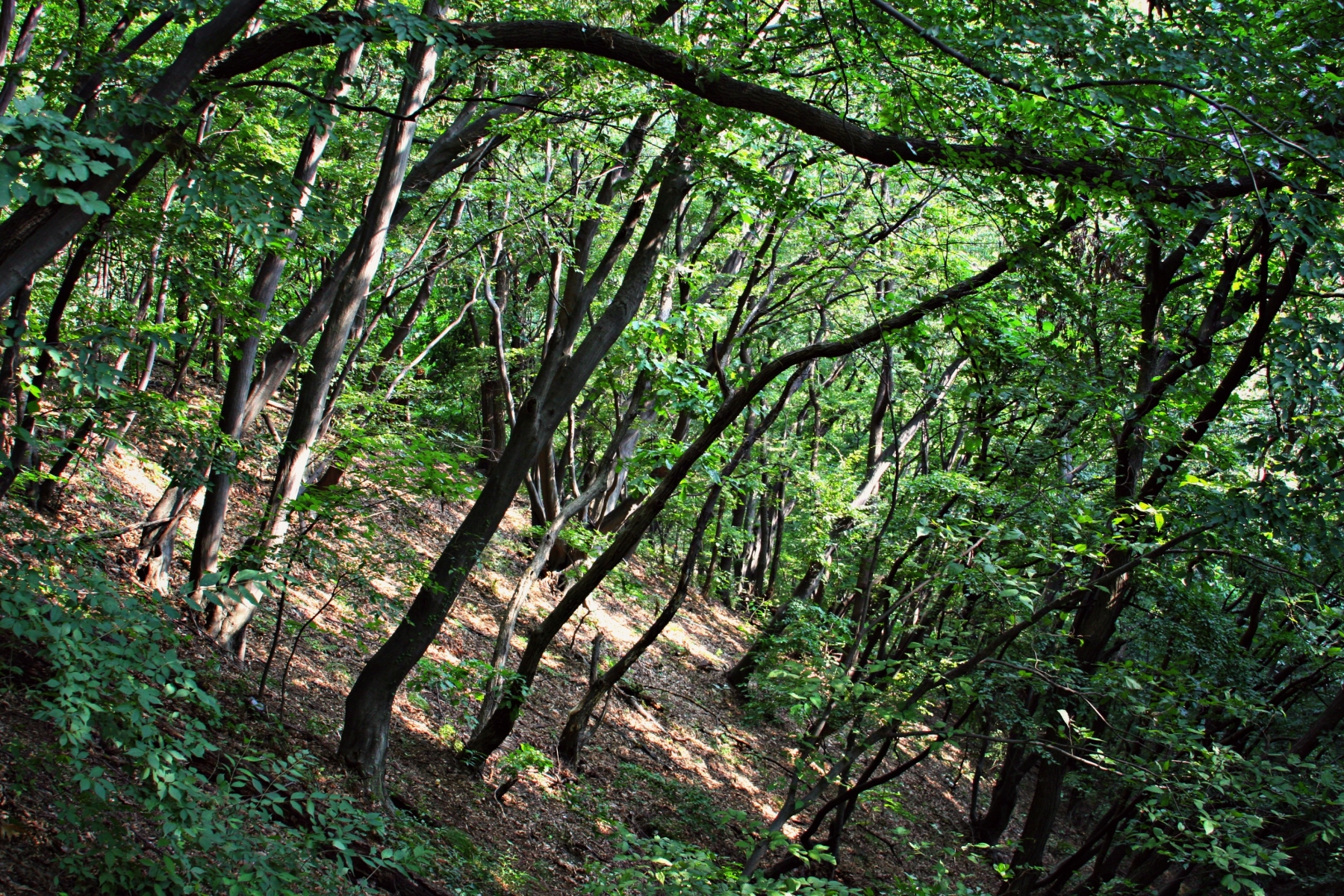
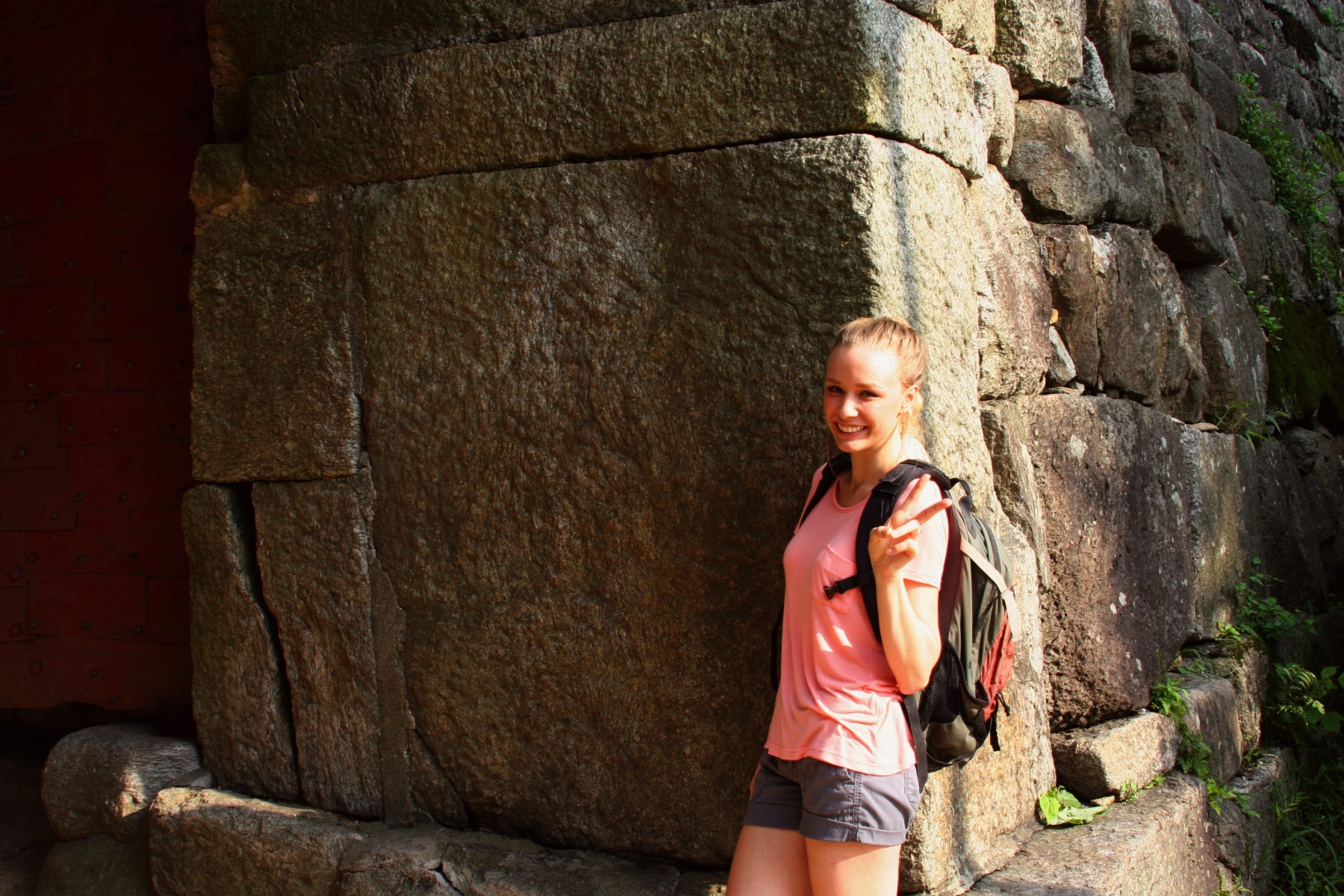
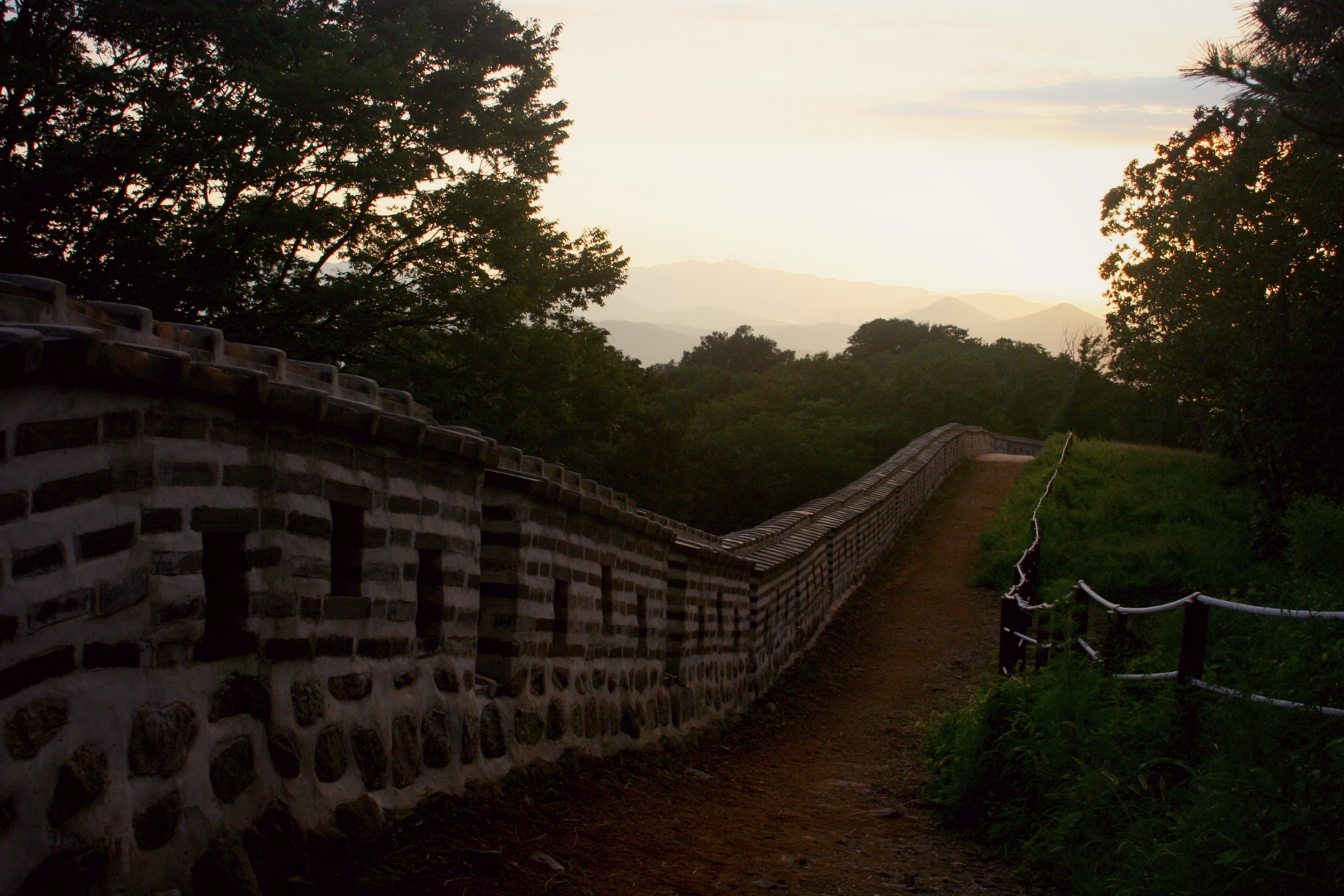
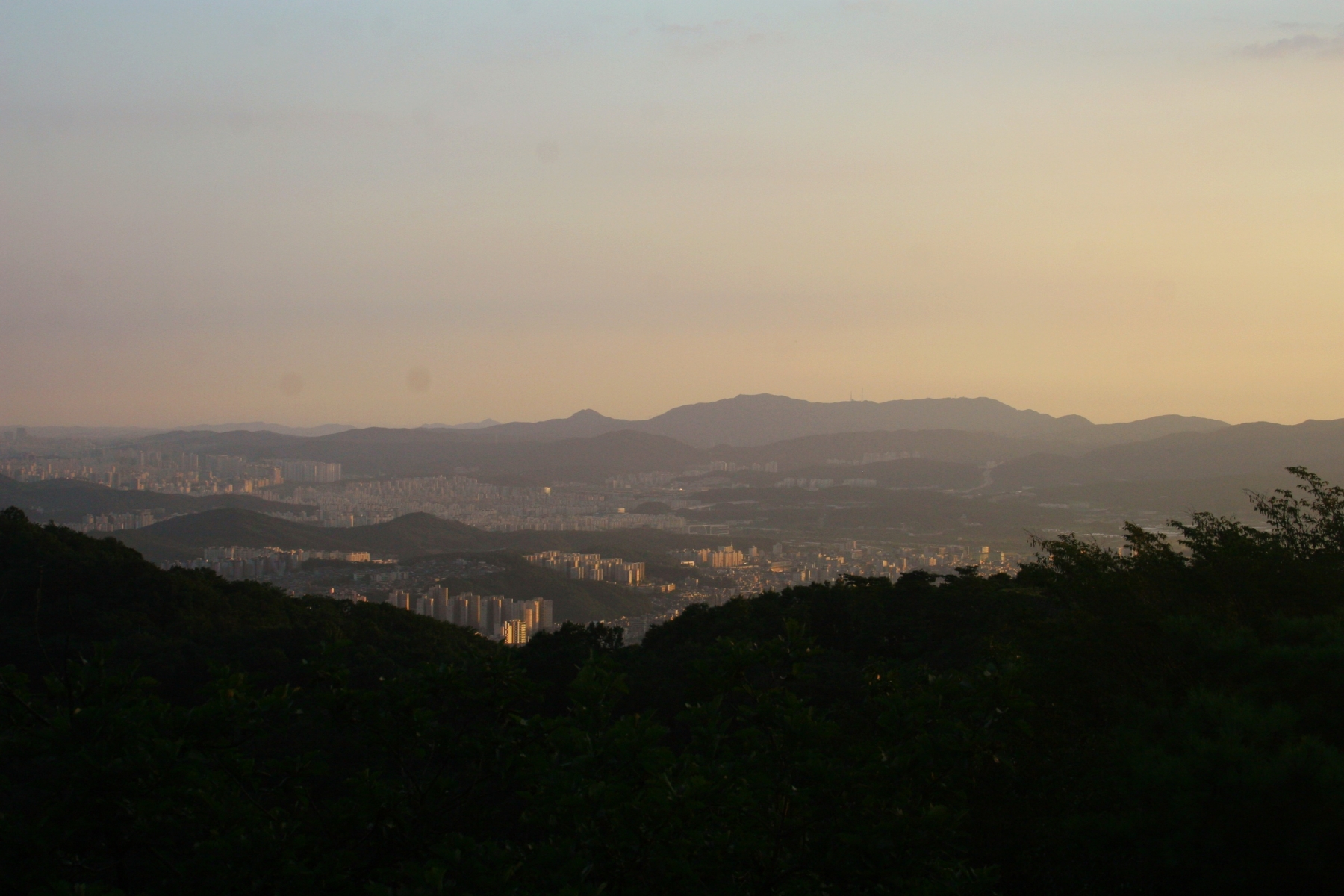


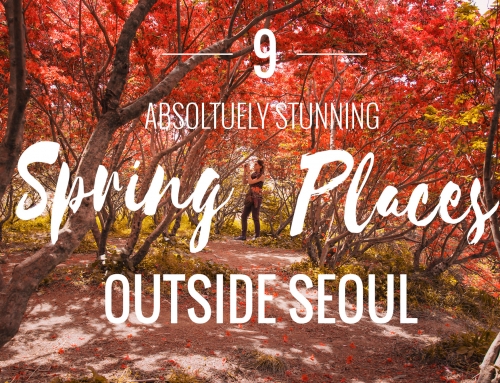



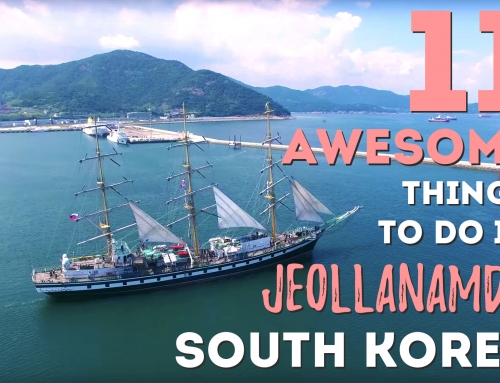

Nice post! I think I am one of the few people who loved the Korean heat/humidity BUT it is impossible to hike in. It is so nice that the weather has cooled down a bit and we can all get back out and hike again. Thanks for sharing your adventure.
[…] Let’s go to… Namhansanseong Fortress […]